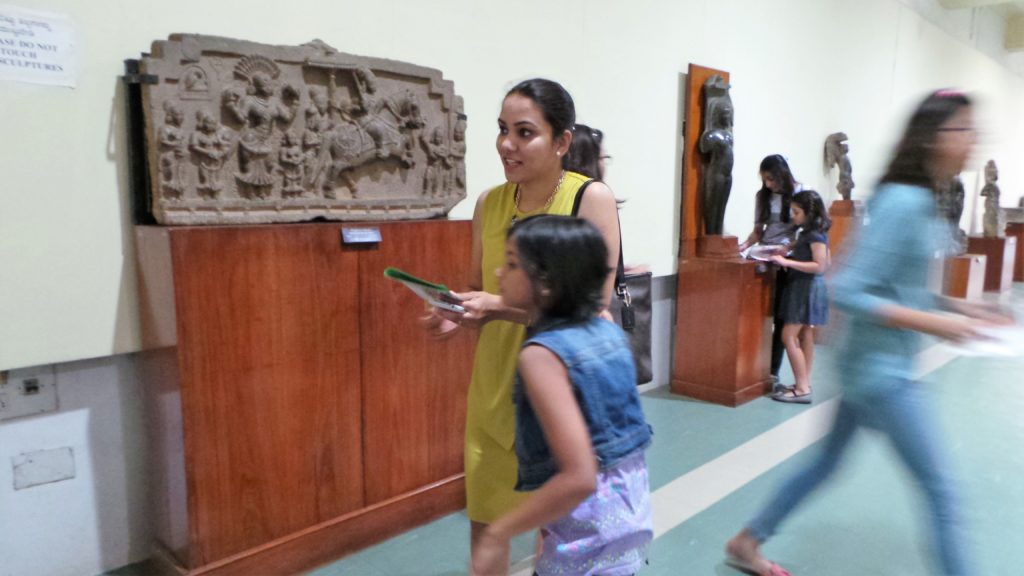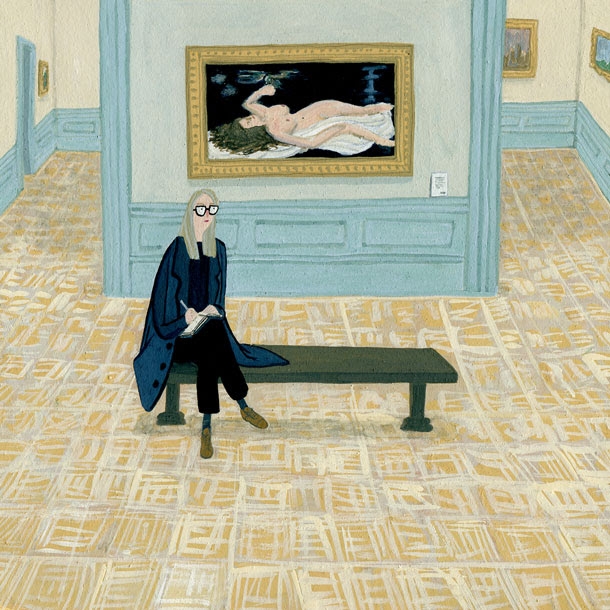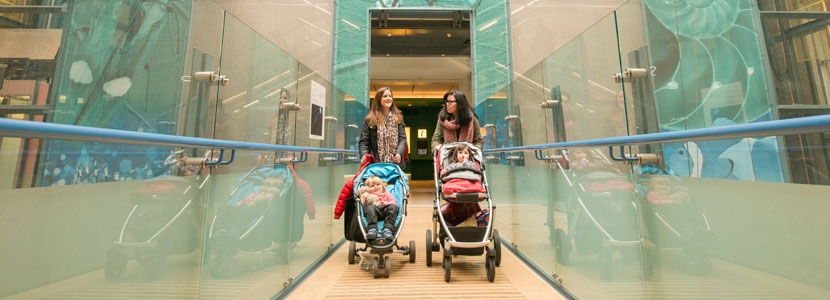Given that museums are increasingly emerging as vital public spaces in urban settings, it would be worth contemplating upon the gendering of the museum spaces as well. I would like to explore (in a two part post) both gendered participation in and response to the museum space and exhibits as well as direct my focus towards those working in these spaces. This post will focus upon the question: Are museums comfortable spaces for women to visit and participate in? Do they enjoy visiting museums?
The concept of the museum as a significant public space and an elemental aspect of urban public design is steadily gaining currency. In a gendered context, if we view museums as pleasure pockets, spaces where women can have fun without being harassed or feeling unsafe, museums are perceived as safe meeting grounds for both men and women of different social backgrounds, to share the same space and view the exhibits together as academics have demonstrated. The crucial word is ‘safe’ which is especially relevant vis a vis women and how it impacts their engagement and participation in the museums. One can wonder how the museum spaces would be further impacted if say, women were responsible for urban public design.

Mother and child engaged in an activity at State Archaeological Museum,Bangalore, photo credit – ReReeti
Research into museum visitor demographics documented in the book, The Economics of Art Museums, in addition to various surveys conducted in museums across the world has consistently shown that more women on the whole visit museums than men; women’s participation in and response to the museum exhibits also differ from that of men. A museum scholar who designs and researches participatory museum experiences, Nina Simon writes on her blog, Museum 2.0 about the ‘Pocket Museum’ . A simple participatory project at Santa Cruz Museum of Art and History, where she works invited visitors to contribute their personal objects and place them in alcoves in the bathrooms. She observed that while women’s bathroom was filled with quirky objects and stories, the men’s bathroom in contrast was noticeably absent of stories and objects. Was it because women in general were lead participants throughout the museum, she wondered?
The increased scope and depth of women’s participation in museums could stem from their comfort level in the museum. A student of College of Arts and Sciences, Boston University, Emily Kalff conducted research regarding gendered response to art in various scenarios. She observed that women tended to linger longer in privately owned institutions such as galleries and museums while men gravitated towards public art. It was worth noting that women had to be more aware of their surroundings when out in streets which would inhibit their prolonged engagement with street art. In short, they felt more at ease in a museum space.
Often being the primary care-givers and takers in a family, women in the role of mothers are more inclined to bring their children to museums, which are seen as nurturing spaces. In contrast to previous generations, where parents brought children to museums to enrich the children’s knowledge, nowadays, they visit the museum for both themselves as much as the children, seeing it as a valuable opportunity to spend quality time with their children as well as personally immerse themselves in the museum experience.
The museums therefore means that apart from being valuable repositories of objects and artifacts, they also function as crucial crucibles of spreading ideas, facilitating empathy and encouraging critical learning through seminars, exhibitions, talks and events that they host. When women access the museums, they are gaining access to both ideas as well as the opportunity to engage with art in an encouraging environment. In the book, The Engaging Museum: Developing Museums for Visitor Involvement, the author, Graham Black mentions that more women than men were reported saying that they would feel comfortable in museums as an avenue to learn new skills and knowledge.
Gender equity in museums in terms of attendance, engagement, and participation has much to do with the idea of the museum being a space in which women feel comfortable and unburdened by the challenges they face in many other public spaces. Furthermore, museums also function as safe, supportive spaces in the sense that they are nurturing environments where free thought is encouraged and women can easily articulate themselves without being silenced. At a time when misogyny, cultural differences, and racism are poisoning the global discourse, museums play a more vital role than ever to facilitate peaceful and productive dialogue amongst both men and women of all cultural backgrounds and economic strata, especially allowing women a platform from which they can be heard loud and clear.
It would be worthwhile to ponder about how many women enjoy visiting museums in India and if so, what draws them towards these institutions?
 Priyanka Sacheti is an independent writer based in Bangalore. Educated at Universities of Warwick and Oxford, United Kingdom, Priyanka previously lived in Sultanate of Oman and United States. She has been published in numerous publications with a special focus on art, gender, diaspora, and identity. She’s author of three poetry volumes and currently working on a collection of short stories. She currently consults at ReReeti and is an editor at Mashallah News. An avid amateur photographer, she explores the intersection of her writing and photography at her blog, http://iamjustavisualper
Priyanka Sacheti is an independent writer based in Bangalore. Educated at Universities of Warwick and Oxford, United Kingdom, Priyanka previously lived in Sultanate of Oman and United States. She has been published in numerous publications with a special focus on art, gender, diaspora, and identity. She’s author of three poetry volumes and currently working on a collection of short stories. She currently consults at ReReeti and is an editor at Mashallah News. An avid amateur photographer, she explores the intersection of her writing and photography at her blog, http://iamjustavisualper
ReReeti works with museums, galleries and heritage sites across India to plan strategies, design systems and implement programmes to increase audience engagement and institutional/company visibility. Email us at info@rereeti.org for a free consultation or to collaborate on an upcoming travelling exhibition.










Recent Comments